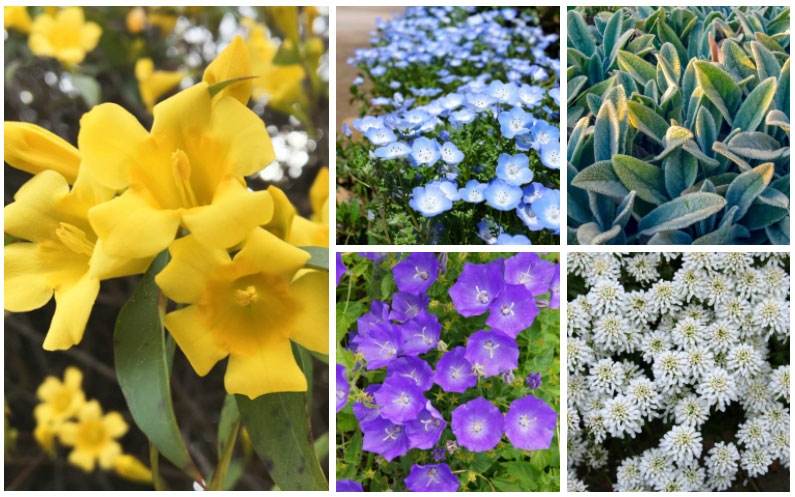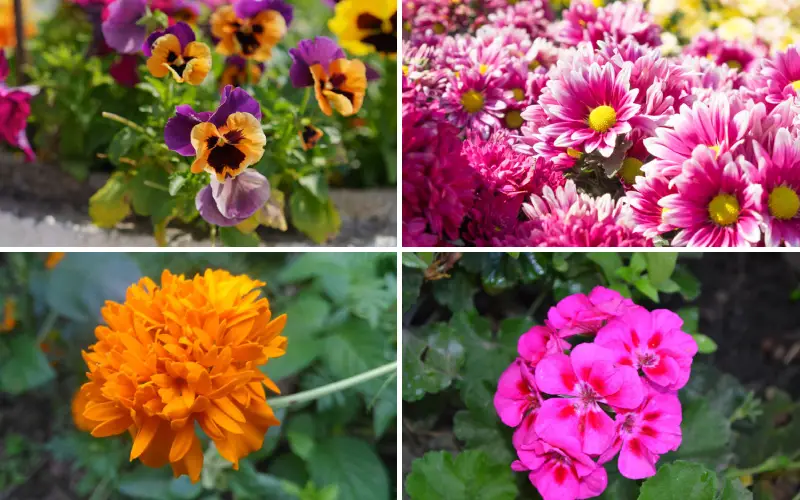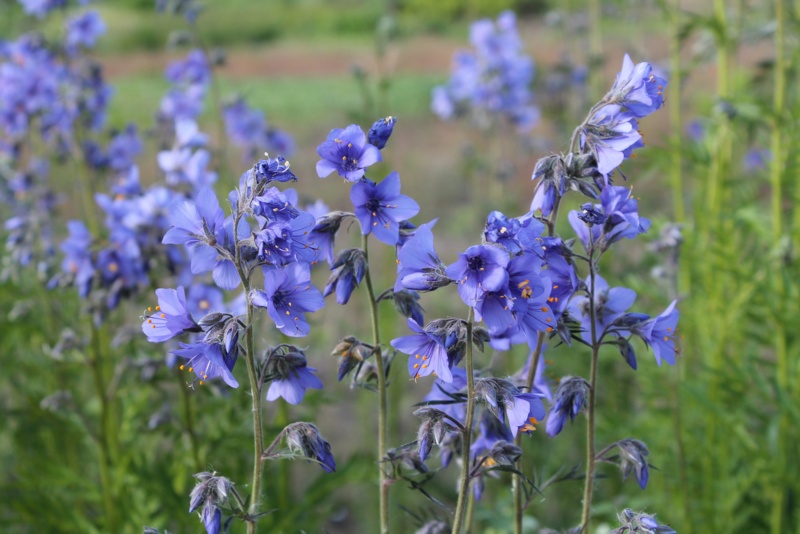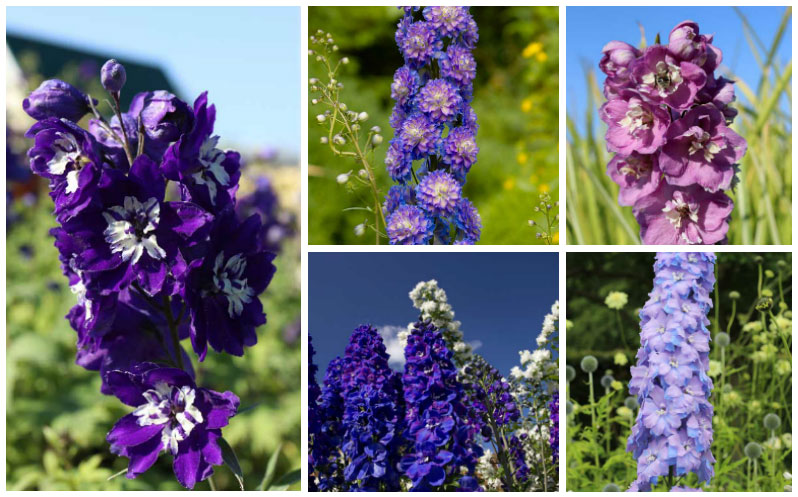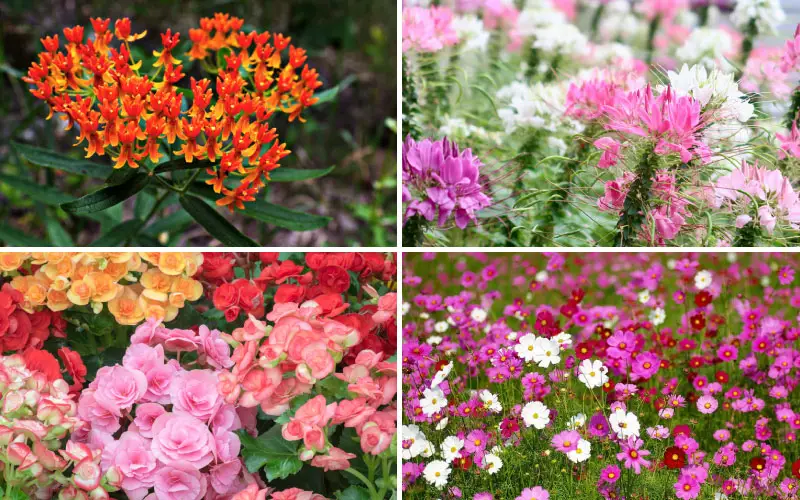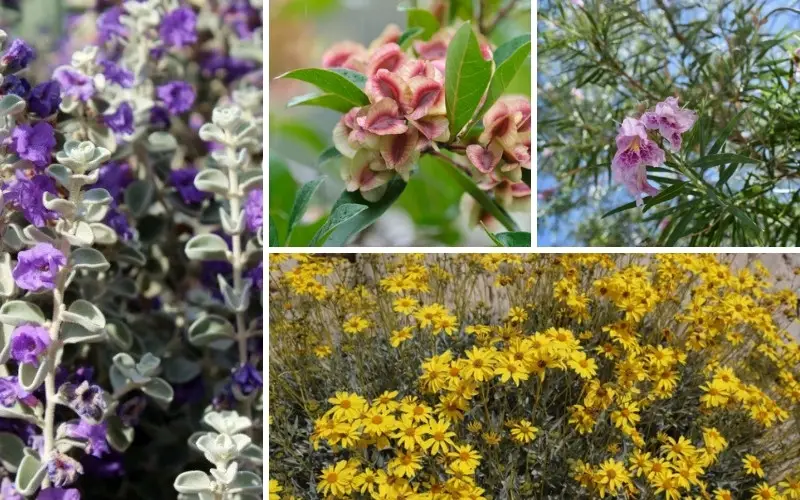
Despite its desert climate, many plants thrive in Arizona. In fact, most plants will grow well there that tolerate USDA hardiness zones of 4b to 10b.
Drought-resistant plants in Arizona share characteristics that they enjoy lots of sun and soil that provide excellent drainage. You can grow plants from small shrubs to full-sized trees. Best of all, many drought-resistant plants that grow in Arizona offer beautiful flowers for much of the year.
Bee Brush (Aloysia gratissima)
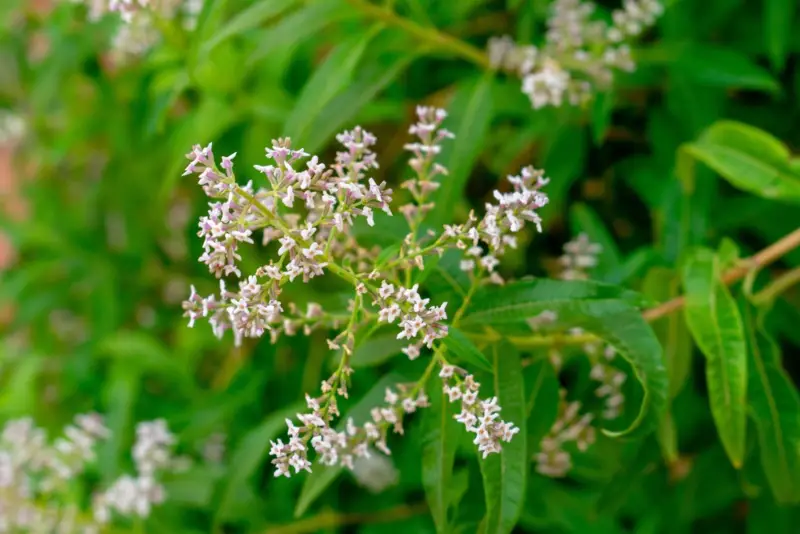
Bee Brush is a beautiful shrub that towers up to ten feet tall. It produces small white flowers framed by spikes and enjoys a long bloom season from March–November. You can prune this bush to form a hedgerow or shape it into a tree.
It grows well in rocky soil with full sun and in rocky outcrops and desert grasslands. Bee Brush has excellent tolerance for hot and cold climates, with a USDA Zone of 8a to 11. Although many people grow Bee Brush as a perennial, you can also treat it as an annual.
Arizona Rosewood (Vauquelinia californica)
Arizona Rosewood is an evergreen with wood containing dark brown and red streaks. It has yellowish-green leaves and white flowers that congregate together to form a flat top. You can trim this evergreen to your liking, letting it grow into a 10-foot tree or maintaining it as a lower-lying shrub.
You’ll need to plant your Arizona Rosewood in a place where it’ll have partial shade. It fares well in rocky, low moisture soil and is native to higher altitude areas ranging up to 5,000 feet. Arizona Rosewood grows in USDA zones 7a to 10b.
Desert Lavender (Hyptis emoryi)
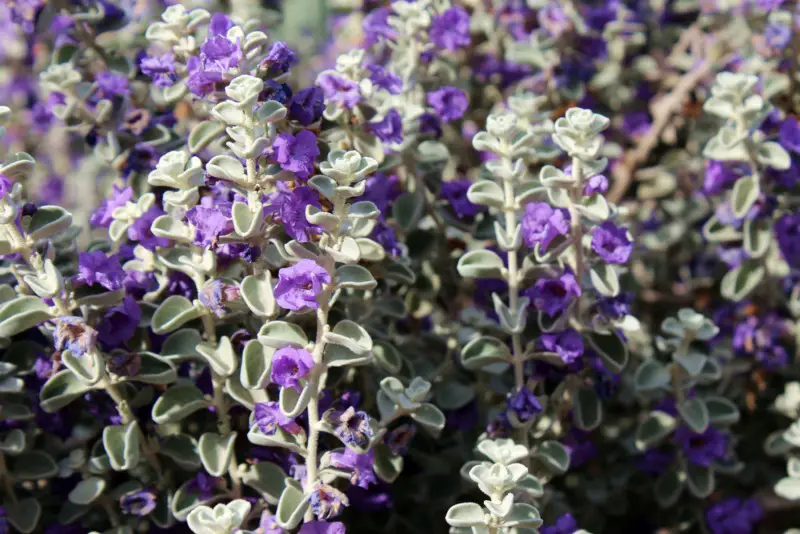
Desert lavender is an excellent way to bring color into a dry environment because it grows bright bluish-purple flowers. You can expect it to stay in bloom through the spring and summer, although it’s common for it to flower at other times of the year too. It’s a shrub that grows up to 12 feet tall and eight feet wide.
Desert lavender requires soil with good drainage and water in the summer once per month. It loves heat and sun, so it should face south if you plant it against a wall. Desert lavender grows in USDA zones 8–10.
Desert Willow (Chilopsis linearis)

The desert willow can grow up to 40 feet tall and has an intricate twisting trunk. The light green, wispy leaves grow as large as 12 inches long. After it rains in the summer, pink or purple flowers appear. Seedpods then replace them by the fall.
Desert willows require full sunlight and have a high tolerance for heat and low moisture. You should plant them in limestone, sand, or loam that drains well. They grow in USDA zones of 7b to 11.
Hop Bush (Dodonaea viscosa)
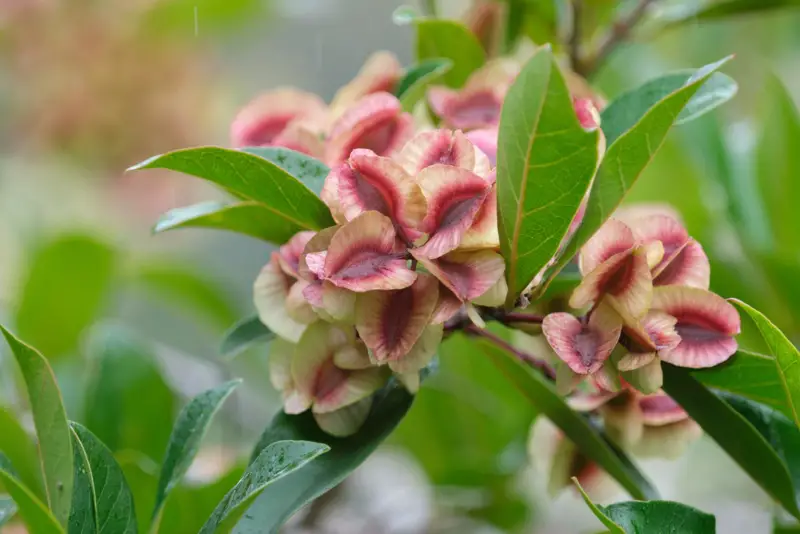
Hop bush is a shrub that sprawls as much as ten feet wide and 12 feet tall. It resembles a kind of willow, as it has long, 4-inch leaves. During the summer, the leaves are green; they change to a red hue in the winter. You can expect yellow flowers with a hint of green in the spring. Seed pods then replace the flowers.
Hop bushes love warm weather, and they grow in USDA zones 9–11. They need very little water, and you shouldn’t plant this shrub in your Arizona yard if you get frost.
Baja Fairy Duster (Calliandra californica)
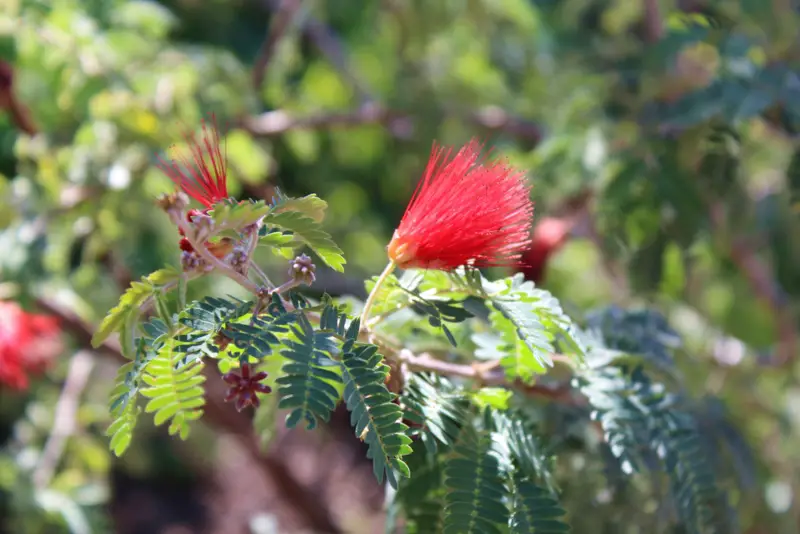
The tropical-looking Baja Fairy Duster is a medium-sized bush that grows up to five feet long and wide. It produces vibrant reddish-orange flowers throughout the year and has one-inch divided leaves. It’s an excellent shrub for attracting hummingbirds.
You should plant Baja Fairy Dusters in full or partial sun in USDA zones of 9-12. They prefer well-draining soil. You should water this shrub every other week in the summer and once every 1–2 months in the winter. It’s a low-maintenance plant, as you don’t have to prune it.
Chuparosa (Justicia californica)
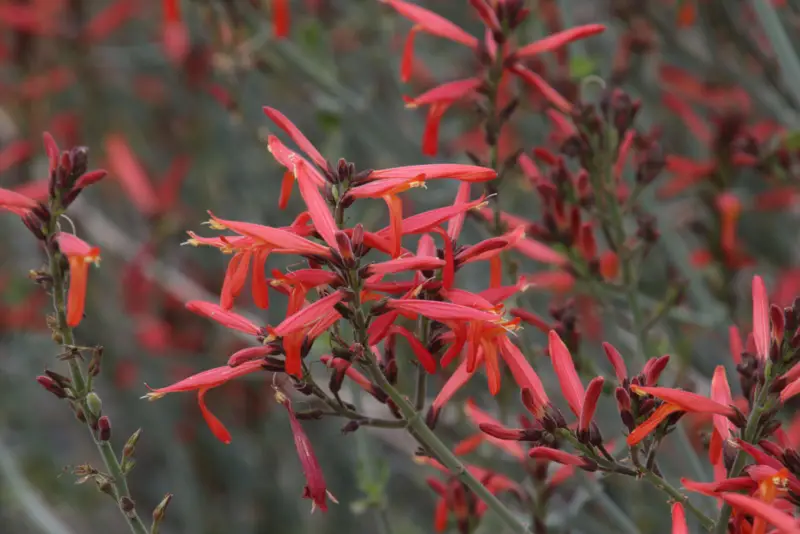
The low-lying Chuparosa is a shrub that produces long, tubular flowers that range from deep red to yellow. Each flower has a lip at its end, showing its insides which have delicious nectar for hummingbirds.
You should plant Chuparosa in full sun and water it about once per month. It handles cold well and likes sandy soil with a pH from 6–8. Chuparosa grows in USDA zones of 8–10.
Mexican Bird of Paradise (Caesalpinia pulcherrima)
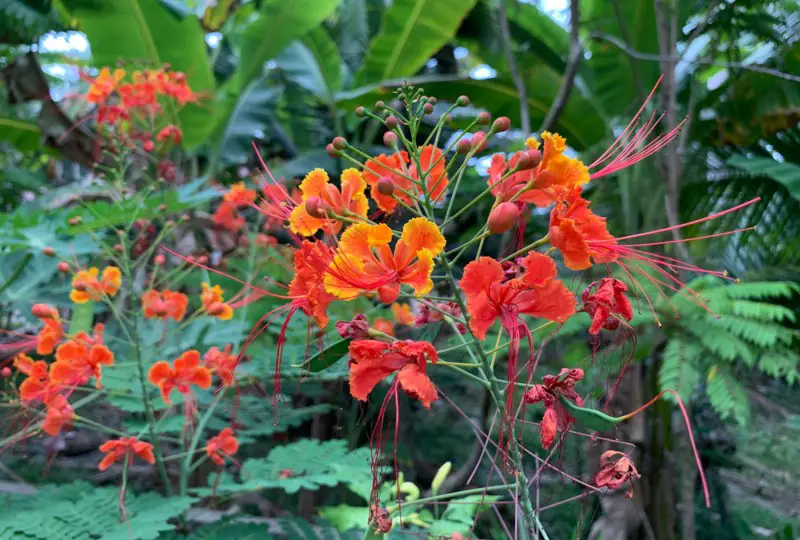
Mexican Bird of Paradise has beautiful yellow flowers with red stamens that project outward. It’s a fast-growing shrub that blooms in the early summer through the fall. It can grow over ten feet tall, so experts recommend pruning it in the winter.
You can plant Mexican Birds of Paradise in the ground or a pot. To maximize its flowering potential, grow it in an area that has full sunlight. You should also ensure the soil has good drainage, as this plant requires little water. It grows best in USDA zones 8-9.
Brittlebush (Encelia farinosa)
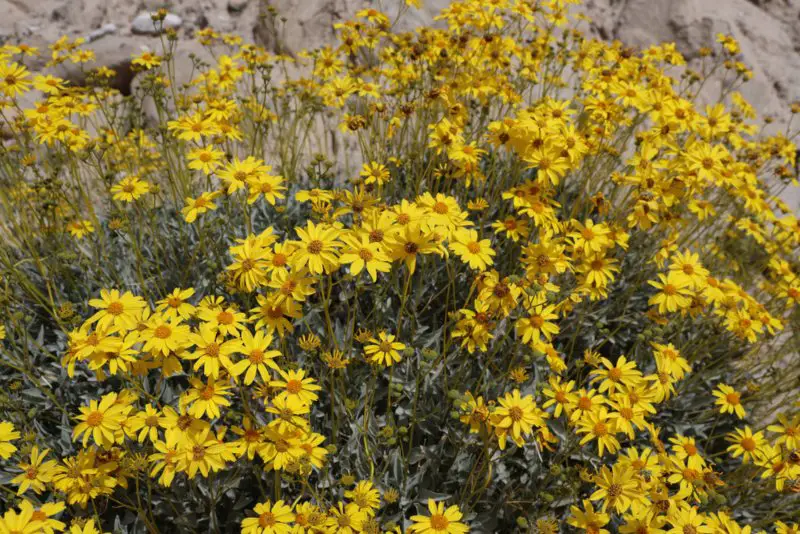
The medium-size brittlebush is round and has silver leaves that help it form its shape. The leaves have some fuzz, and its branches have a woody texture with a pleasant smell. As spring approaches, tiny yellow flowers grow on the stalks. They also poke above the leaves, creating a beautiful bouquet-like appearance.
Brittlebush likes to grow in warm climates and rocky or sloped surfaces. It prefers sandy or broken-down granite soil, and you can prune this plant in the summer or fall to improve flowering. Brittlebush grows in USDA zones 7a to 9b.
Flame Honeysuckle (Lonicera heckrottii)
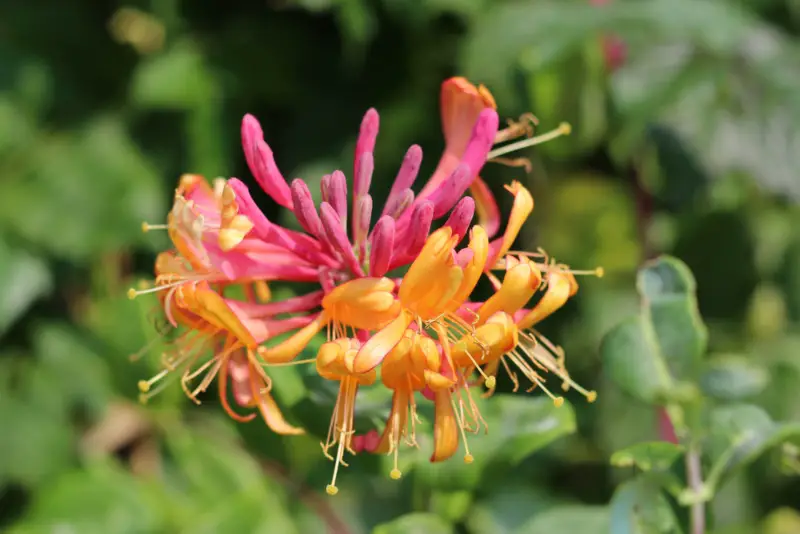
The Flame honeysuckle is a vine that grows stunning tubular pink flowers with yellow and orange markings on the inside. The vine produces flowers starting in the early summer through fall, where it produces red berries. It can grow as tall as 15 feet and is excellent to plant along trellises and fences.
Flame honeysuckle likes full or partial sun and well-draining soil. It prefers a bit more moisture than many of the other plants mentioned here, so you may need to water it every couple of weeks. Air circulation is also essential for this plant. It grows in USDA zones of 5b to 8b.
Conclusion
Arizona’s harsh climate might seem intimidating to even the most experienced gardener. Fortunately, these drought resistant plants will not only live in such a climate, but with the right care, they will thrive. Keep in mind that not every plant is well-suited to your specific soil type and growing conditions, though. You may need a bit of trial and error, or an expert’s support, to achieve the garden you’re after.

